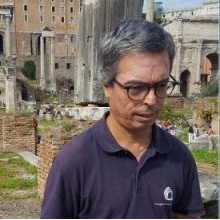Selected Papers from the 2020 IMEKO TC-4 International Conference on Metrology for Archaeology and Cultural Heritage
A special issue of Sensors (ISSN 1424-8220). This special issue belongs to the section "Sensing and Imaging".
Deadline for manuscript submissions: closed (30 November 2021) | Viewed by 12598
Special Issue Editors
Interests: applied geophysics; ground-penetrating radar; electrical resistivity tomography; seismic tomography
Special Issues, Collections and Topics in MDPI journals
Special Issue Information
Dear Colleagues,
The 2020 IMEKO TC-4 International Conference on Metrology for Archaeology and Cultural Heritage (MetroArchaeo 2020, http://www.metroarcheo.com/) brings together researchers and operators in the enhancement, characterization, and preservation of archaeological and cultural heritage with the main objective of discussing production, interpretation, and reliability of measurements and data. The conference is conceived to foster exchanges of ideas and information, create collaborative networks, and update innovations on “measurements” suitable for cultural heritage for archaeologists, conservators, and scientists.
Dr. Giovanni Leucci
Dr. Marco Zanatta
Guest Editors
Manuscript Submission Information
Manuscripts should be submitted online at www.mdpi.com by registering and logging in to this website. Once you are registered, click here to go to the submission form. Manuscripts can be submitted until the deadline. All submissions that pass pre-check are peer-reviewed. Accepted papers will be published continuously in the journal (as soon as accepted) and will be listed together on the special issue website. Research articles, review articles as well as short communications are invited. For planned papers, a title and short abstract (about 100 words) can be sent to the Editorial Office for announcement on this website.
Submitted manuscripts should not have been published previously, nor be under consideration for publication elsewhere (except conference proceedings papers). All manuscripts are thoroughly refereed through a single-blind peer-review process. A guide for authors and other relevant information for submission of manuscripts is available on the Instructions for Authors page. Sensors is an international peer-reviewed open access semimonthly journal published by MDPI.
Please visit the Instructions for Authors page before submitting a manuscript. The Article Processing Charge (APC) for publication in this open access journal is 2600 CHF (Swiss Francs). Submitted papers should be well formatted and use good English. Authors may use MDPI's English editing service prior to publication or during author revisions.
Keywords
- Cultural heritage
- Archeology
- Metrology
- Experimental techniques for cultural heritage
- Sensors and data acquisition







